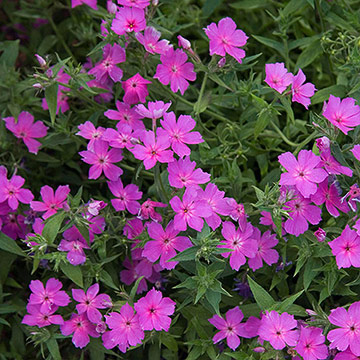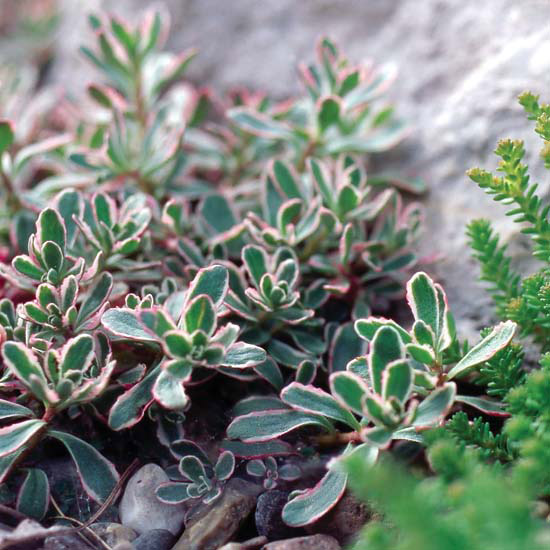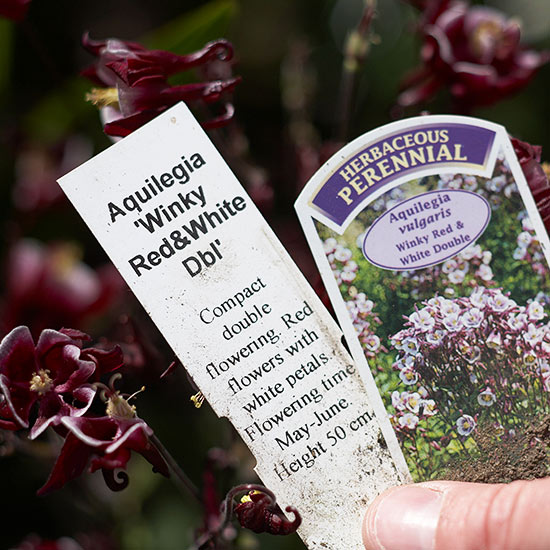






Once you begin to discover plants to grow in your garden, it's time to leap into the pool of plant taxonomy, the naming of plants. The reason you need to understand plant names is simple: Some plants, such as coneflower, have several named varieties. If you want a coneflower with backward-curving orange petals, you'll need to understand the name to purchase the right one. Some plant names, such as Campanula portenschlagiana, are curiously long and complicated, while some are short and sweet, as in Alcea rosea. The purpose of plant names is to organize the world of plants. Most have two types of names: common and botanical.
continue reading belowThe common name of a plant is easy to pronounce and, at times, wonderfully descriptive. Names such as blackberry lily, bleeding heart, goatsbeard, and fountaingrass offer a glimpse into a plant's personality or appearance. A common name can also reveal clues about a plant's origin, such as Ozark sundrops, or it can paint a picture of a flower, such as rose turtlehead.
Common names are often confusing because the same plants might have different common names in different places. Liatris spicata, which we list as gayfeather, is also known as blazing star or button snakeroot. The same common name can also refer to completely unrelated plants. Gayfeather and bugbane are from two unrelated plant groups, but they share the same common name, "snakeroot."

A botanical name consists of two parts: a genus and a specific epithet, or species. The genus is a closely related group of plants. It begins with a capital letter and is written in italics. Think of a genus as a surname -- for example, Sedum. The second part of a plant name, the specific epithet, is written after the genus and is also italicized. In the Sedum genus, there are specific members with identifying characteristics, such as Sedum acre, Sedum spurium, and Sedum reflexum.
Within a species, sometimes there are plants that are similar but have one or more outstanding differences. These plants are called a variety of that species. Sedum hispanicum has a variety known as Sedum hispanicum var. minus, which grows only 4 inches tall.
A variety can be cultivated for a specific growth characteristic that occurs through natural mutation, plant selection by breeders, or hybridization. In these cases, the cultivated variety is called a cultivar. Cultivars for Sedum spurium include 'Dragon's Blood', with bronze-tinged leaves, and 'Red Carpet', with red-tinted leaves that turn burgundy in fall. Cultivar names are typically capitalized and set off with single quotes.
Note: Plant names are often pronounced differently. Clematis might be KLEM-uh-tiss or kluh-MAT-iss. For Phlox paniculata, the species might sound like pa-nikew-LAH-ta or pa-nikew-LAY-ta. Don't worry about pronunciation rules. The bottom line on botanical names is that they are the key to getting the right plant.
As taxonomists study plants, they sometimes conclude that a plant is named incorrectly and belongs to a different genus or species. An example is bugbane: Now listed as part of the Actaea genus, it was previously -- and still is, in some cases -- known as Cimicifuga. If you see two names listed for a perennial in a catalog or on a website and you plan to look for the plant at a local garden center, be sure to record both names. Sometimes grower nurseries have a stock of plant tags on hand, and they'll use what they have, which might list an older name.

Cultivar name
The cultivar name is assigned by the plant breeder. Popular cultivars are commonly referred to by their cultivar names in garden centers and mail-order catalogs. Example: 'Goldsturm'.
Genus name
The first word in a plant's botanical name is the genus. Think of this as a surname. There are several members of the Rudbeckia plant genus.

Species name
The second word in a botanical name is the specific epithet, commonly called the species. This identifies the plant specifically, separating it from all other plants in the genus. It is meaningless unless used in combination with the genus name. Rudbeckia fulgida is a specific species.
Common name
Common names fluctuate. One person might call this plant rudbeckia, while another calls it black-eyed Susan.
Copyright © www.100flowers.win Botanic Garden All Rights Reserved